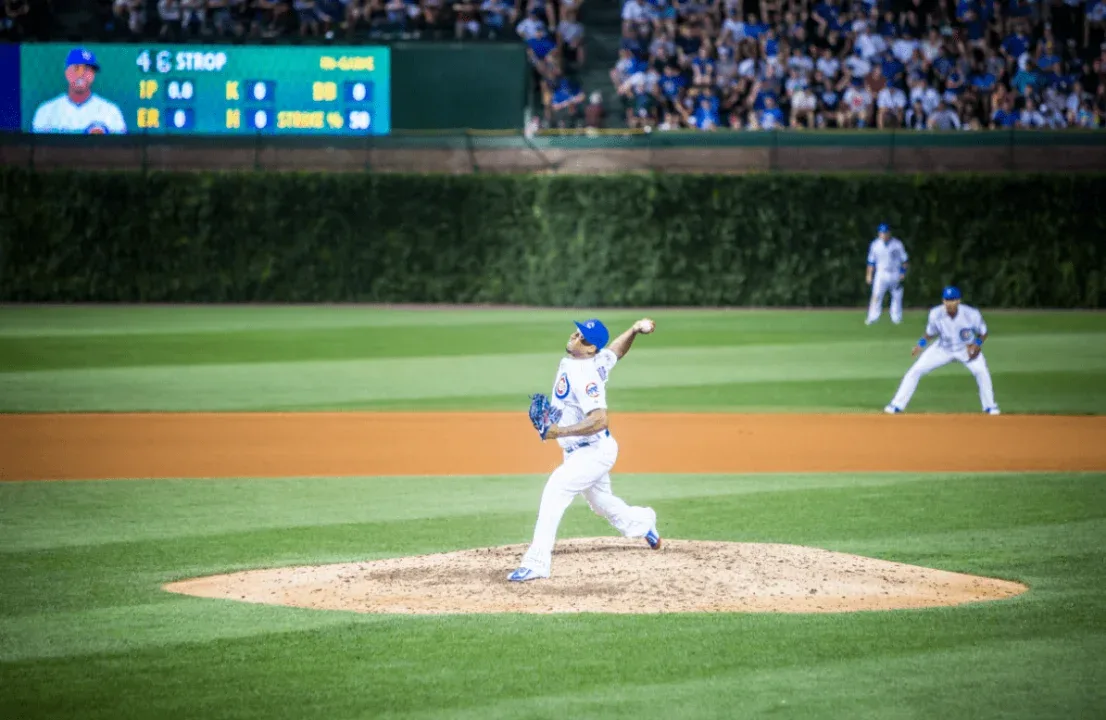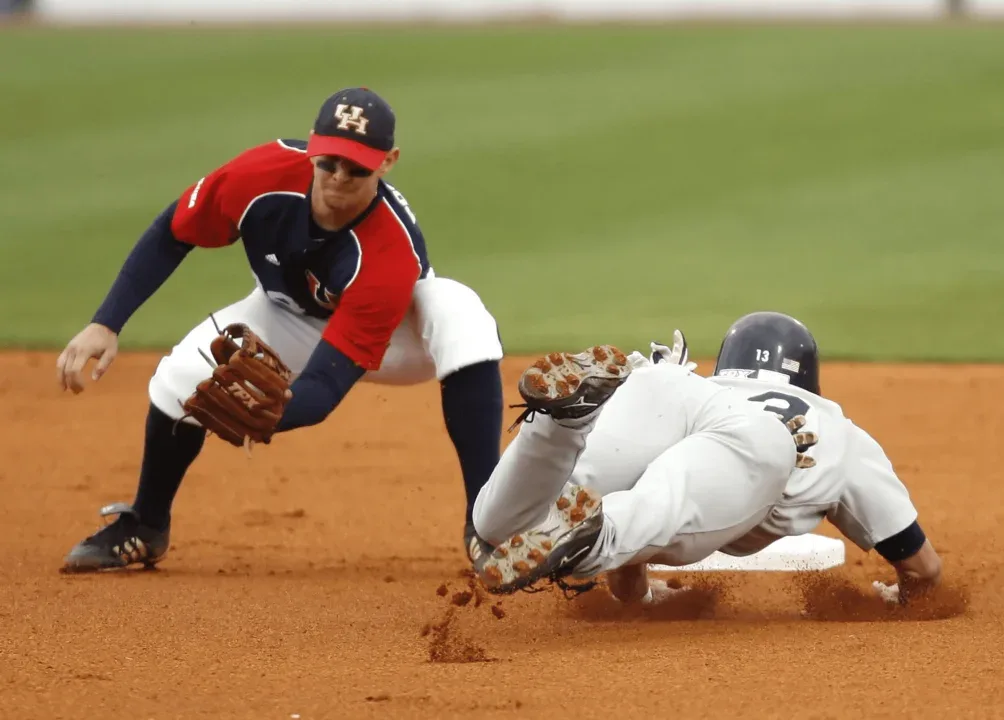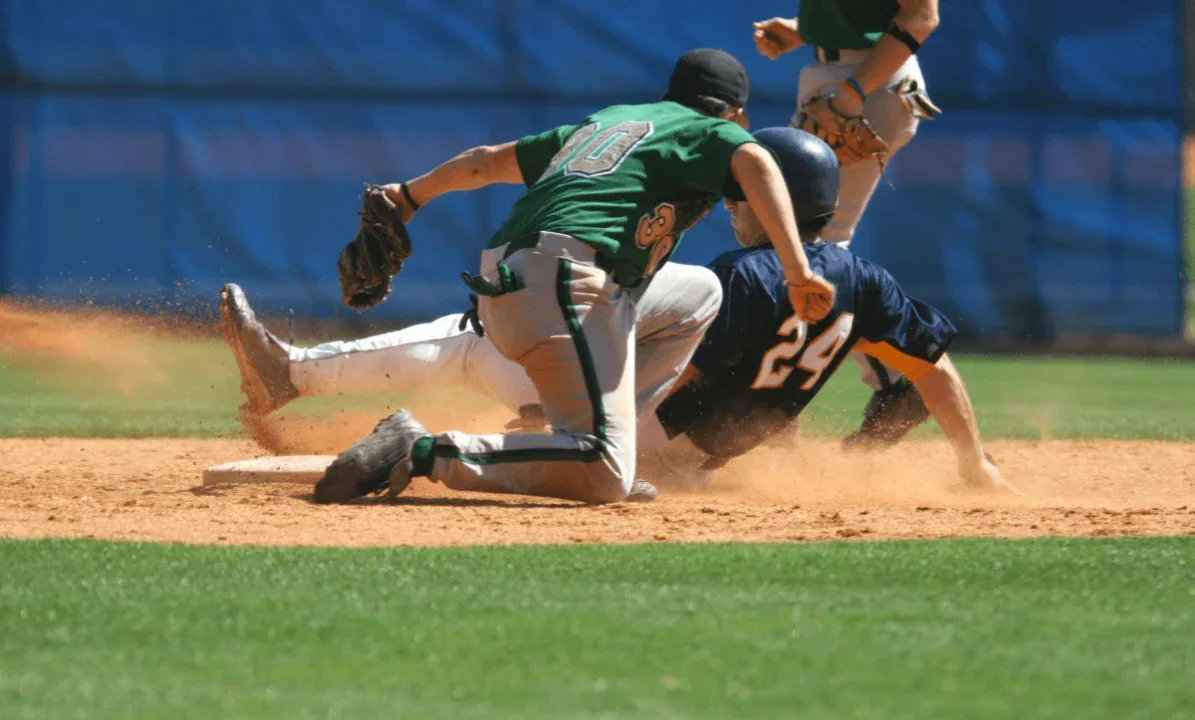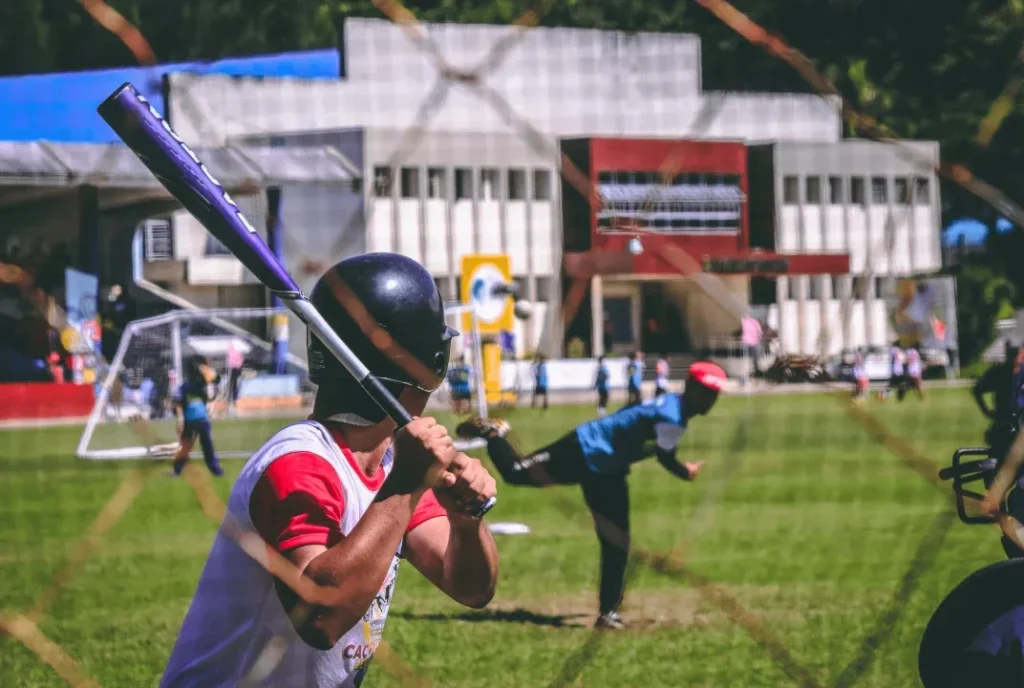The mercy rule is a regulation used in baseball that allows for early game termination if one team dominates the other significantly. It aims to prevent a lopsided game from dragging on and causing undue harm to the outmatched opposing team. The mercy rule is widely used across all levels of competition – from Little League and high school baseball games to Major League Baseball (MLB). In high school and little league baseball, the mercy rule typically comes into play when one team has a lead of 10 or more runs after five innings. In college baseball, the mercy rule is often called the “slaughter rule” and can lead to an early end of the game if one team is leading by ten or more runs after seven innings. Mutual agreements between head coaches or the umpires can enforce the mercy rule in baseball. In this article we will explore the most iconic rule “what is the mercy rule in baseball“.
Table of Contents
ToggleI. Importance of understanding the Mercy Rule in baseball

Importance of understanding the Mercy Rule in baseball
Baseball players and fans must understand the Mercy Rule, which ends a game early if one team is up by a certain number of runs. In Major League Baseball, the Mercy Rule is not used, but in most high school and youth and little league baseball games, the rule is in place to prevent excessive scores and injuries. There are variations of the law depending on the local and little league, more local league rules, and level of competition. Still, if one team typically has a lead of 10 to 15 runs after a set number of innings (usually five to seven), the game will end. The Mercy Rule is important not only to prevent injuries but also to maintain competitive and fair play. It also teaches players about sportsmanship and respect for their opponents.
II. What is the Mercy Rule in Baseball?

What is the Mercy Rule in Baseball
The mercy rule in baseball is a regulation put in place to end an uneven matchup promptly. Specifically, it allows for games to end early if one team has gained an insurmountable lead. In Major League Baseball, this rule is often called the “10-run rule.” High school baseball is decided on a state-to-state basis, with some schools implementing a 10-run or 15-run rule. The mercy rule can also vary in different leagues and levels of international baseball competition too. The purpose of the mercy rule is to prevent a lopsided game from dragging on, which can be both demoralizing for the losing team and boring for spectators. The mercy rule helps ensure a fair and timely conclusion to a baseball game.
-
Explanation of how mercy rule works
The mercy rule in baseball, also known as the run rule explained the slaughter rule, is in place to end a game early in the event of a lopsided score to avoid further embarrassment to the losing team. In Major League Baseball, the mercy run rule, only applies to spring training and exhibition games, and there is no mercy run rule in effect for regular-season games. However, some high school and college baseball organizations have implemented the mercy run rule even in regular-season games.
In high school baseball, in local leagues, the mercy rule generally kicks in if one team leads by ten or more runs after completing the top half or fifth inning. The game is then called, and the team with the lead is declared the winner. Similarly, in college baseball, the mercy rule can be enforced if one team leads by more than ten runs, or more runs after completing the first half innings or seventh inning.
The mercy rule ensures that a game is not needlessly prolonged, and players can avoid unnecessary injuries due to the lopsided final score anyway. Additionally, fans aren’t subjected to watching a game where the outcome is already determined.
III. Pros and Cons of the Mercy Rule in Baseball

Pros and Cons of the Mercy Rule in Baseball
The mercy rule in baseball is controversial among fans, coaches, and players. Here are some of the pros and cons of the law:
-
Pros
It can prevent injuries and accidents in a game that has already become lopsided.
It saves time and energy for both teams, especially in long games local league leagues and tournaments.
It reduces the risk of unsportsmanlike behavior, such as intentional beaning or showboating by the winning team.
-
Cons
It may be seen as humiliating and demoralizing for the losing home team however, especially if the home team fails they are playing the home team in a major division championship or rivalry game.
It may encourage one team is ahead of the winning team and visiting opposing team’s lead to become complacent and lose their competitive edge.
It may disqualify certain players from playing, such as position players being called in to pitch.
-
Advantages of the Mercy Rule
The Mercy Rule in baseball is a regulation that ends a game when one team is ahead by a significant margin. Although it is a controversial topic, it has several advantages. One of the main advantages is that it can prevent injuries and accidents in a game that has already become lopsided. Another advantage is that it saves time and energy for both teams, particularly in long matches and tournaments, reducing the risk of unsportsmanlike behavior. Additionally, the Mercy Rule allows the losing team to regroup and focus on their next game or practice. Overall, the Mercy Rule ensures that a match does not become too out of hand, preventing unnecessary fatigue, injury, or demoralization.
-
Prevents blowout games
The same mercy rules and rule in baseball is a regulation that prevents blowout games from becoming too long or boring for both the audience and the losing team. The law sets a predetermined number of innings or runs that, when surpassed, will declare the game over with the leading team declared the winner. In Major League Baseball, the same mercy rules and rule applies only to the final inning of a regulation game, while in high school and youth leagues, it can be enforced earlier in the game, often at the coach’s discretion. Additionally, some clubs may have variations of the same mercy rules and rule, such as a time limit or a pitch count rule, that can also result in the game’s conclusion.
-
Saves time and energy
The mercy rule is a regulation in baseball where a game can be called off early if one team has a significant lead over the other team. The mercy rule is not officially recognized in Major League Baseball, but a similar law is implemented in high school and some college baseball games.
The high school baseball division mercy rule states that the game can end if a team is leading by at least ten runs after five innings or at least 15 runs after four innings. This rule is in place to avoid unnecessarily prolonging a lopsided game. Additionally, some youth baseball leagues have implemented a run-ahead law, knockout rule where the the game ends immediately if a team is leading by ten or more per turn at bat or runs after a certain inning.
-
Encourages sportsmanship
The mercy rule in sports, including baseball, encourages good sportsmanship by preventing teams from running up the score in lopsided games. The law allows games to end early if one team has a significant lead, preventing humiliation for the other team and maintaining a level of respect and fairness in the final score of the game.
The mercy rule also helps keep games moving reasonably, which is especially important in youth or high school leagues where players may have other commitments or multiple games scheduled in one day. By avoiding unnecessarily prolonged games, players can stay focused and engaged, leading to a more enjoyable experience for everyone involved.
-
Disadvantages of the Mercy Rule
While there are benefits to using the mercy rule in baseball, there are also some potential drawbacks. One of the most significant disadvantages is that it can take away valuable playing time and experience for less skilled players. In some cases, coaches may implement the mercy rule quickly, preventing players from developing important skills or getting valuable game experience. Additionally, the mercy rule can lead to a lack of motivation for players who feel they cannot win. This can lead to decreased effort, poor sportsmanship, and a less enjoyable experience for everyone involved.
-
Limits playing time for athletes
Playing time limits is a common practice in sports, especially at lower levels of play, such as high school and youth leagues. These limits ensure fair opportunities for all athletes, regardless of skill level.
Typically, playing time limits are based on the number of quarters or half innings played per six inning game or a set amount of time on the field. The specifics vary depending on the sport and level of play.
Coaches are responsible for enforcing these limits and own rules and making sure that each athlete has a chance to contribute to the team.
-
Decreases competitiveness
When it comes to sports, competitiveness is key. However, certain league rules and regulations can unexpectedly decrease the competitiveness of a game. One example is the mercy rule in baseball, also known as the run-ahead rule.
The mercy rule can be implemented when one team has gained an insurmountable lead. In high school baseball, the mercy rule declares that the game is over if a one team scores or the home team is up by at least ten runs after five innings.
-
Can be seen as disrespectful
In baseball, the mercy rule is a regulation that stops a game in progress if one team has built an insurmountable lead over the other. While it is meant to prevent a long, lopsided game, certain players and coaches can frown upon the rule. Being on the receiving end of a game termination can feel like a loss without closure, and some may see it as disrespectful.
In most high school baseball games in the United States, the mercy rule kicks in when a team leads by at least ten runs after five innings. In college and professional leagues, the government is typically applied at later stages of the game, often in the 7th inning or beyond, depending on the club. Once the mercy rule seven inning game is instated, the losing team may feel cheated out of the chance to mount a comeback.
IV. Controversies Surrounding the Mercy Rule in Baseball

Controversies Surrounding the Mercy Rule in Baseball
The Mercy Rule in baseball is a regulation that ends games early if one team has a substantial lead. This is typically implemented little league rules in high school and youth sports leagues when a team leads by a significant margin after one half innings in, usually ten runs or more after the 5th or seven inning games or 6th or nine inning game.
The rule has been a subject of debate and controversy, with some arguing that it takes away from the competitive nature of the sport and can lead to more mercy rules and rule abuse by coaches. Others say it helps prevent injuries and humiliation and can be a positive experience for players on both teams.
The controversy surrounding the Mercy Rule also extends to the professional level of junior league baseball leagues too, where some argue that it is unnecessary and takes away from the excitement of the game. However, it has not been implemented in Major League Baseball, nor is there any official mercy rule implemented in college and baseball leagues.
Ultimately, the decision to implement a Mercy Rule in any baseball game falls at the discretion of the league or governing body of official game, and it remains a topic of debate within the baseball community.
-
Arguments in favor of the Mercy Rule
The Mercy Rule in baseball is a regulation that ends a game early if one team wins by a certain number of runs at a certain point. The Mercy Rule is controversial, with arguments both for and against it.
Supporters of the rule argue that it prevents humiliation and injuries, particularly when a game ends early or is lopsided, allowing players to end it with dignity and without risking further injury. Moreover, by completing games early, players receive more rest and recovery time, leading to a better-quality games in future matches.
Another argument favoring the Mercy Rule is that it can allow coaches to provide more playing time for younger or less experienced players. This helps to promote player development and provides opportunities for players to gain valuable experience on the field.
Furthermore, the mercy rule ensures that the game progresses on time, preventing long and drawn-out games that can lead to player fatigue and audience disenchantment. This can also preserve the integrity of the game by maintaining a level of competitiveness and fair play.
-
Arguments against the Mercy Rule
While the mercy rule is widely implemented in various levels of baseball, some opponents argue that it takes away from the spirit of the game. Critics say that the law may rob players of the opportunity to learn resilience and persistence in adversity. They also argue that it takes away the chance for teams to make dramatic comebacks, which can be some of the most exciting moments in the sport. Additionally, some argue that the rule incentivizes teams to avoid playing hard and giving their best effort, as they could potentially “give up” once they’re behind by a certain amount of runs. Despite these criticisms, the mercy rule remains in place in many major leagues to ensure that games remain competitive and entertaining for players and fans.
V. FAQs about the Mercy Rule in Baseball
1. What is the mercy rule in baseball?
The Mercy Rule, also known as the Run Rule or Slaughter Rule, is a rule in baseball that allows a game to end early if there is a significant point differential between the teams.
2. Does the mercy rule exist in MLB baseball?
In Major League Baseball, the Mercy Rule does not exist, but in high school and other youth leagues, the game may be called if there is a 10-run lead for visiting team over home team after five innings or if home team establishes a 15-run one team’s lead after four innings.
3. What is the mercy rule in the little league games and baseball?
In Little League, there is a similar rule in which the first game ends early if there is a 10-run lead after four innings or the same inning if a team is up by how many after seven innings or 15 runs after three or how many innings each.
4. What is the purpose of the mercy rule in baseball?
The purpose of the Mercy Rule is to avoid prolonging a lopsided game and to ensure the losing team does not have to suffer a humiliating defeat.
5. What are the run rule and slaughter rules in baseball?
The Run and Slaughter Rule are other terms used interchangeably with the Mercy Rule in baseball. The Run Rule is usually used in high school senior league games and college-level games that end early, while the Slaughter Rule is more commonly used in Little League games.
VI. Conclusion
In academic writing, the conclusion is vital to any research paper or essay. It should summarize the main points of the study and provide a final, conclusive statement on the topic.
The purpose of the conclusion is to tie together all the information presented in the paper and leave a lasting impression on the reader. It should not include any new ideas or knowledge but rather serve as a reflection on the research conducted.
To write a strong conclusion, start by restating the thesis statement in a new way that emphasizes the paper’s main points. Then, summarize the key findings and the significance of the study. Finally, provide some closing thoughts that leave the reader with something to consider.
In conclusion, the conclusion is a crucial part of any academic paper as it helps to bring together the main points of the study and leave a lasting impression on the reader. By following the guidelines, writers can ensure their conclusions are effective and impactful.
-
Recap of key points
The “mercy ten run rule” is a regulation to prevent lopsided games from dragging on for too long in baseball. In Major League Baseball, the the ten run rule is known as the “10-run rule,” which states that if a team is leading by ten or more runs after the seventh inning, the game is called, and the team with the lead is declared the winner. In high school baseball, the the ten run rule varies by state but usually kicks in after the fifth or seventh inning and requires a lead of either 10 or 15 runs. The mercy ten run rule is in place to preserve the integrity of the game and ensure that teams do not waste valuable time in a game that has already been decided. While it is not an official rule in all leagues or levels of competition, many leagues have adopted some form of mercy ten run rule to ensure that games are played in a timely fashion and that players have an opportunity to rest and recuperate from games already out of reach.

